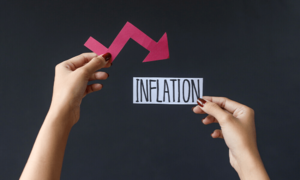PAKISTANIS, like citizens of most developing countries, tend to be attracted by foreign goods. For them a product is bound to be of superior quality simply because it is imported, but if it is made in Pakistan its quality must be inferior.
This perception may be true of certain local items, but many of us are not aware of the fact that a wide range of our products are being sought for their high standards as they have made a name for themselves in many countries. It is a fact that an amazing variety of Pakistani items are being sought in the international market.
Pakistan's only problem seems to be that our government and exporters have not succeeded in marketing their products as effectively as they should. It is the reason that the 'Made in Pakistan' label could not become a symbol of quality.
At present some of our commodities/raw materials, which are being exported, are either sold by importer companies or outlets with their own labels or used in products made abroad. The consumer doesn't know that Pakistan has a role to play in the item he has purchased.
Wheat, rice, fruits, seafood, raw cotton and yarn, processed and raw leather, marble, onyx rocks, herbs and medicinal plants, petroleum and petroleum products, and spices are among the main exports in this category.
These are mostly unbranded goods, although some commodities like fruits and rice may carry the 'Products of Pakistan' tag. Europe, the Middle East, China, Malaysia, Afghanistan, South America, Africa, Russia, Central Asia, Philippines and Vietnam are the principal countries to which one or the other of these items is being exported.
The finished products are also exported for well-known labels abroad. In this case also the buyer remains unaware of the fact that the product he has purchased has been made in Pakistan, in certain cases with 100 percent indigenous materials. Finished items that are more conventional, such as garments, fall in this category.
Many Pakistanis during shopping on a foreign trip pay a very high price for a product, which they could have bought for a fraction of the price in their own country.
Such products are also there which are sold either in chain stores or in reputed outlets established abroad by the local brand name. Customers are always aware that these products are made in Pakistan.
Textile items such as, bedding, bed sheets, quilts, towels and garments are exported mainly to the US and Europe with 'Made in Pakistan' tag. Well-known Pakistani brands are not only exporting cotton fabric, but also household linen and made-ups.
Some of the items, which are exported mainly to the US, but also to Europe and Africa, don't have their manufacturing company's name, but their wrappers do carry a 'Made in Pakistan' stamp.
Pakistani pickles, jams, spices, spices mixes, jams jellies and custards have found their way onto shelves practically all over the world. These items carry the company name and 'A Product of Pakistan' label.
The footballs, manufactured in Sialkot, deserve a special mention. These footballs have been used in the World Cup matches.
The government has fixed a target of $17 billion exports for the current financial year and it has been making every effort to encourage exporters to meet the target. The present government has adopted a more consistent approach to enhance the image of 'Made in Pakistan' label.
Now our exporters need to get their act together, if they want to be counted among the major exporters of the world considering there are untapped markets waiting to be explored. We have fascinating range of items that can be produced for foreign consumption, but markets have to be developed.
The government should introduce business-friendly diplomacy and discourage the exports of raw materials by focusing on value-addition through motivation of businessmen. It is also advisable to expand the network of government technical training institutes in the country, as the surplus funds of Rs 12 billion were available with the Export Development Fund (EDF).
In order to flourish and boost export-oriented garment industry in Sialkot it is necessary to set up advanced training institutes under the supervision of foreign experts in that city.
The government should also to arrange maximum single-country exhibitions abroad through Export Promotion Bureau, besides, ensuring mutual exchanges of trade delegations for enhancing the national exports.
BR100
11,818
Decreased By
-48.3 (-0.41%)
BR30
35,737
Increased By
39.8 (0.11%)
KSE100
113,426
Decreased By
-722.5 (-0.63%)
KSE30
35,706
Decreased By
-246.3 (-0.69%)


























Comments
Comments are closed.